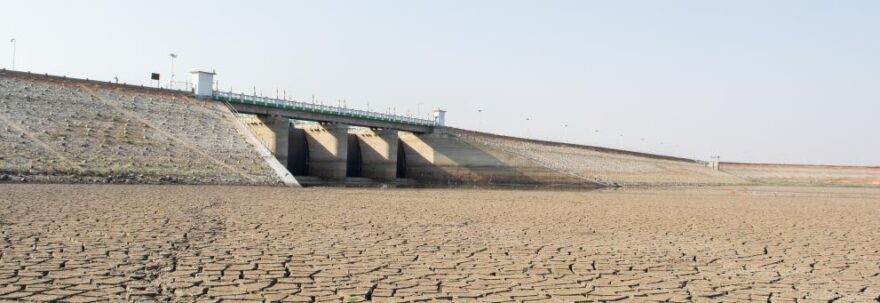Drought ravages Europe and the US: what is the situation and what extreme measures is each country taking?
According to the data, it is the greatest drought facing Europe in 500 years.
Drought, a common episode in Spanish summers, has also become European. It rains little in Spain, but neither does it, or barely, in the rest of Europe. While waiting for the definitive data for the summer, it is the greatest drought that the European continent has faced in 500 years.
The drought has left unprecedented images throughout Europe.

“We have not fully analyzed this year’s event because it is still ongoing. There have been no events similar to the 2018 drought in the last 500 years, but this year I think it is worse,” said Andrea Toreti, from the Joint Research Center of the European Commission. According to Toreti, there is “a very high risk that drought conditions” will continue for the next three months. The expert assures that everything indicates that the intensity and frequency of the drought “will increase drastically in Europe, both in the north and in the south”.
What is the situation and how is each country dealing with it?
-Italy:
The drought is not only being suffered by the south of the country, accustomed and with historical habits to face it, but also the rich and prosperous north. That is the novelty of 2022.
We have the example of the Po Valley, where between 30% and 40% of Italian agricultural production is found. The flow of the Po, Italy’s longest river, has dropped to a tenth of its usual rate, and water levels are two meters below normal. Since November it has not rained in the region.
The production of corn and rice for risotto has been affected. Rice farmers say that up to 60% of their harvest could be lost as the rice fields dry up and deteriorate because they are absorbing seawater due to the low level of the river.
-Netherlands:
This summer is among the driest in the Netherlands since 1901, according to the KNMI meteorological institute. The scarcity of water mainly affects, in addition to navigation, agriculture. Some watercourses are blocked and crops can no longer be constantly irrigated. The supply of fresh water in rivers, ditches and lakes has also decreased.
From August 3, the Dutch government began to apply measures based on water distribution criteria at the national level and in the drought scenario. One of these measures is to keep the water level of the IJsselmeer, the country’s largest lake, as high as possible, since much of the Netherlands gets its fresh water from there. Measures have been taken in several places to properly distribute the water between the rivers.
The Water Scarcity Management Team is coordinating national and regional measures to make water distribution as optimal as possible. The Minister for Infrastructure and Water Management, Mark Harbers, has advised the Dutch to use water economically. “I ask everyone to think carefully about whether to wash their car or completely fill their inflatable pool,” said the minister.
-Germany: The country’s problem is not so much for agriculture or consumption as it is for industry. Germany’s main industry lobby warned on Tuesday that factories may have to cut production or stop it altogether because the lowering of the Rhine is making it harder to transport goods. “Low water levels threaten the security of supply to the industry,” said the deputy director of it.
The Rhine has been a vital part of the economy of northwestern Europe for centuries. Its waters are used for freight transportation, irrigation, manufacturing, power generation, and consumption. The river flows from Switzerland through the industrial heartland of Germany before reaching the North Sea at the megaport of Rotterdam. His level in Emmerich, near the Dutch border, has not stopped falling.
Authorities say the shipping lane is still nearly 200 centimeters deep, but Tuesday’s measurement clearly outlines the consequences of severe drought in recent months. According to the German Federal Institute for Hydrology, the level of the Rhine will continue to drop at least until early next week.
The interruption of barge traffic on the Rhine would severely affect the German and European economy, explains Deutsche Welle. Many barges, which carry coal for power plants and vital raw materials for industrial giants like steelmaker Thyssen and chemical giant BASF, are already operating at 25% capacity to reduce their draft, increasing transportation costs fivefold.
For the EU, increasing the transport of goods by water by 25% is one of the priorities of the ecological transition, but in the face of the drought, Germany is working to divert it to rail and road, says The Guardian. To replace a standard barge load, between 40 and 100 trucks are needed.
-France:
French Prime Minister Elisabeth Borne says the country is facing the “most serious drought” ever recorded. According to the Météo-France meteorological agency, the dought of 2022 is the worst drought since records have been kept (since 1958).
“The exceptional drought we are experiencing is depriving many municipalities of water and is a tragedy for our farmers, our ecosystems and biodiversity,” said Borne. The Prime Minister has acknowledged that the situation could worsen. 62 regions have restrictions on the use of water, ranging from a ban on hoses and irrigation to the use of water only for drinking. A week ago, there were already more than 100 municipalities that could no longer supply drinking water to the tap and needed to be supplied with trucks. French rivers are also used to cool the nuclear power plants that produce 70% of the country’s electricity. The giant EDF (the leading producer and distributor of electricity in France and Europe) has had to temporarily cut power production at two of its nuclear plants that use river water to cool the reactors.
-United Kingdom:
The green English meadows are dry. On August 12, the British Government declared a state of drought in a dozen regions of England. That places restrictions on domestic and commercial water use for residents.
Some water companies have already announced restrictions, including a ban on using hoses to water gardens, clean cars or fill swimming pools. It has been done by Waters of the Thames, which provides water to 15 million people, and the four water companies in the west of Wales and south coast of England are expected to follow the same path.
Weeks of baking heat and drought across Europe have seen water levels in rivers and lakes fall to levels few can remember, exposing long-submerged treasures – and some deadly hazards.
In Spain, archaeologists have been delighted by the emergence of a prehistoric stone circle dubbed the “Spanish Stonehenge” that is usually covered by waters of a dam that have fallen in the worst drought in decades. Officially known as the Dolmen of Guadalperal, the stone circle currently sits fully exposed in one corner of the Valdecanas reservoir, in the central province of Caceres, where authorities say the water level has dropped to 28 percent of capacity.

The stone circle was discovered by German archaeologist Hugo Obermaier in 1926, but the area was flooded in 1963 in a rural development project under Francisco Franco’s dictatorship. Since then it has only become fully visible four times.
Another of Europe’s mighty rivers, the Danube, has fallen to one of its lowest levels in almost a century as a result of the drought, exposing the hulks of more than 20 German warships sunk during World War II near Serbia’s river port town of Prahovo.
The vessels were among hundreds scuttled along the Danube by Nazi Germany’s Black Sea fleet in 1944 as they retreated from advancing Soviet forces. The sunken ships still hamper river traffic during low water levels.

– United States:
The United States is also suffering from a lack of rain. So much so that nearly three-quarters of US farmers say this year’s drought is hurting their crops, with significant losses.



